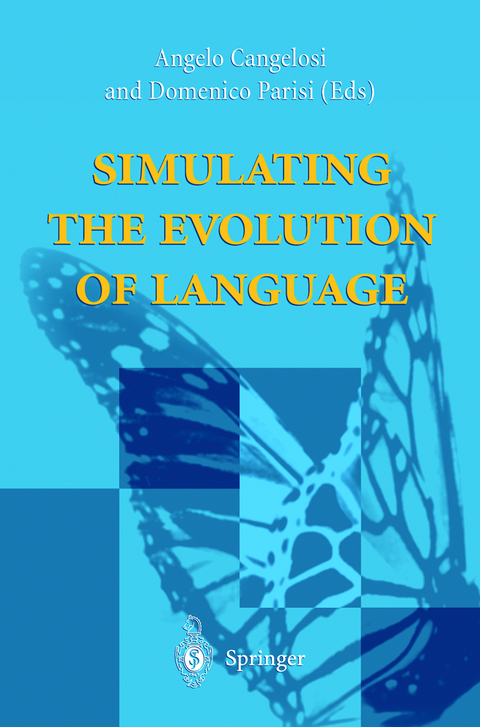
Simulating the Evolution of Language
Springer London Ltd (Verlag)
978-1-85233-428-4 (ISBN)
This book is the first to provide a comprehensive survey of the computational models and methodologies used for studying the evolution and origin of language and communication. Comprising contributions from the most influential figures in the field, it presents and summarises the state-of-the-art in computational approaches to language evolution, and highlights new lines of development.
Essential reading for researchers and students in the fields of evolutionary and adaptive systems, language evolution modelling and linguistics, it will also be of interest to researchers working on applications of neural networks to language problems. Furthermore, due to the fact that language evolution models use multi-agent methodologies, it will also be of great interest to computer scientists working on multi-agent systems, robotics and internet agents.
I Introduction.- 1 Computer Simulation: A New Scientific Approach to the Study of Language Evolution.- 2 An Introduction to Methods for Simulating the Evolution of Language.- II Evolution of Signaling Systems.- 3 Adaptive Factors in the Evolution of Signaling Systems.- 4 Evolving Sound Systems.- 5 The Evolution of Dialect Diversity.- III Evolution of Syntax.- 6 The Emergence of Linguistic Structure: An Overview of the Iterated Learning Model.- 7 Population Dynamics of Grammar Acquisition.- 8 The Role of Sequential Learning in Language Evolution: Computational and Experimental Studies.- IV Grounding of Language.- 9 Symbol Grounding and the Symbolic Theft Hypothesis.- 10 Grounding Symbols through Evolutionary Language Games.- V Behavioral and Neural Factors.- 11 Grounding the Mirror System Hypothesis for the Evolution of the Language-ready Brain.- 12 A Unified Simulation Scenario for Language Development, Evolution, and Historical Change.- VI Auto-organization and Dynamic Factors.- 13 Auto-organization and Emergence of Shared Language Structure.- 14 The Constructive Approach to the Dynamic View of Language.- VII Conclusion.- 15 Some Facts about Primate (including Human) Communication and Social Learning.- Author Index.
| Erscheint lt. Verlag | 14.11.2001 |
|---|---|
| Zusatzinfo | 13 Illustrations, black and white; XII, 355 p. 13 illus. |
| Verlagsort | England |
| Sprache | englisch |
| Maße | 155 x 235 mm |
| Themenwelt | Geisteswissenschaften ► Philosophie ► Sprachphilosophie |
| Geisteswissenschaften ► Sprach- / Literaturwissenschaft ► Sprachwissenschaft | |
| Informatik ► Grafik / Design ► Digitale Bildverarbeitung | |
| Informatik ► Theorie / Studium ► Künstliche Intelligenz / Robotik | |
| ISBN-10 | 1-85233-428-2 / 1852334282 |
| ISBN-13 | 978-1-85233-428-4 / 9781852334284 |
| Zustand | Neuware |
| Haben Sie eine Frage zum Produkt? |
aus dem Bereich


